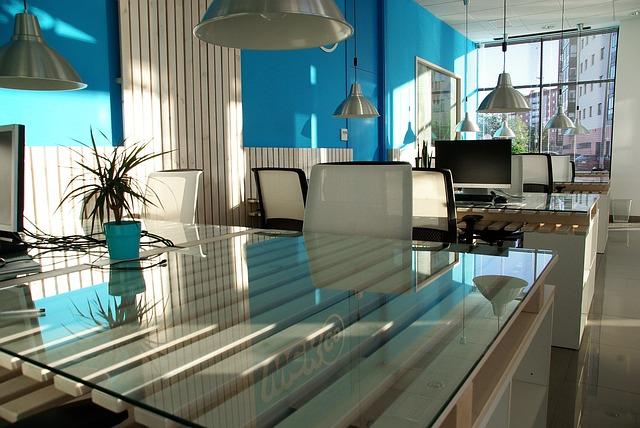6 Things to Keep in Mind When Refurbishing Your Office
Planning a makeover for your workspace? Office refurbishment can be both an exciting and daunting task. If done right, it can significantly boost productivity and morale. From layout design to furniture choices, here are some key points to consider, to ensure your office refurbishment journey is smooth and rewarding. Buckle up as we guide you through this transformative process!
Light Control
Light control holds significant importance when it comes to office design. Natural light is a vital element, known to boost mood, productivity, and even the overall health of employees. However, excessive sunlight can lead to unwanted glare on screens or overheating, consequently causing discomfort. That's why it's essential to balance natural and artificial light.
Achieving this balance helps ensure that all areas are well-lit, reducing the strain on employees' eyes, keeping them alert, and mitigating fatigue. The people working for Shuttercraft say that incorporating features like lutron blinds uk, light dimmers, or tinted windows can be effective in managing light. Similarly, consider the color temperature of artificial light - cooler lights can promote alertness, while warmer lights are less glaring. Remember, well-managed lighting isn't just about aesthetics - it's about creating an environment conducive to comfort and productivity.
Space Planning and Layout
Planning your layout correctly is an integral element in office design that directly impacts work efficiency and team collaboration. A well-thought-out layout facilitates smooth traffic flow, ensuring that employees can move about without hindrance. Strategic placement of equipment and furniture can minimize unnecessary movement, boosting productivity.
Moreover, sufficient space allocation for different zones - workstations, meeting rooms, or break areas - can significantly enhance the functionality of the office. Carefully planned spaces also account for growth, allowing for easy reconfiguration or expansion as your team expands. Importantly, a good layout can promote collaboration and communication by creating spaces that encourage interaction. Thus, effective space planning is not just about fitting people into the office - it's about optimizing the space for productivity, comfort, and future growth.
Aesthetics and Branding
Your office design always needs to compliment your brand and this can be done in several ways. Here are some great ones:
- Color scheme
- Logo displays
- Branded graphics and artwork
- Customized signage
- Furniture and fixtures
- Branded merchandise and swag
- Customized lighting
- Branded displays or showcases
- Branded communication spaces
Aesthetics and branding in office design are not just about creating an attractive workspace. They communicate your company's values and culture, fostering a sense of belonging among employees. A well-branded office can serve as a powerful representation of your business, impressing visitors and clients. Moreover, a visually pleasing environment can stimulate creativity, enhance productivity, and contribute to overall employee well-being. Therefore, it's integral to incorporate your brand's aesthetic into your office design.
Ergonomics and Comfort
Ergonomics is a crucial element in office design, focusing on creating a workspace that prioritizes the health and comfort of employees. Considering these in design involves selecting chairs that support good posture, desks at the correct heights to eliminate strain, and keyboard setups that prevent wrist problems.
The right ergonomic design can significantly reduce discomfort and the risk of injury, particularly from repetitive strain injuries. Additionally, it can also boost productivity, as employees who are comfortable can work more efficiently. Thus, ergonomics is not just about employee health—it's also an investment in the overall productivity and success of your business.
Tech and Connectivity
Technology is a linchpin of modern office design, transforming the workspace into a hub of efficiency and innovation. Seamless connectivity, through high-speed internet and advanced telecommunication systems, ensures smooth collaboration and information sharing. Implementing smart technologies like climate control systems and automated light fixtures enhances comfort and energy efficiency.
Moreover, integrating tech-friendly furniture, like standing desks with embedded power sockets and conference tables with built-in digital interfaces, offers convenience and fosters productivity. Lastly, tech-enabled security systems offer improved safety, providing peace of mind for both employees and employers. Remember, incorporating technology isn't just about staying current — it's about crafting an environment that caters to modern work methods and employee needs.
Flexibility and Future-proofing
Flexibility in office design is crucial as it accommodates the ever-evolving nature of business and workforce needs. Flexible spaces can quickly adapt to changes, such as team expansions, new project requirements, or shifts in work procedures. They foster collaboration, provide room for private workstations, and allow for areas dedicated to relaxation or brainstorming.
Moreover, flexible design can integrate technology advancements, ensuring your workspace stays current and efficient. Ultimately, a flexible workspace is about being future-proof, enabling your business to thrive amidst change while promoting productivity, employee comfort, and well-being. Therefore, when refurbishing your office, consider a design that can effortlessly morph to meet your future needs.
So, as you embark on your office refurbishment journey, keep these elements in mind. From ensuring lighting perfection, efficient space planning, and brand representation, to prioritizing ergonomics, tech integration, and future-proofing, every detail counts. Remember, a well-designed office goes a long way in enhancing productivity, employee well-being, and ultimately, the success of your business.

